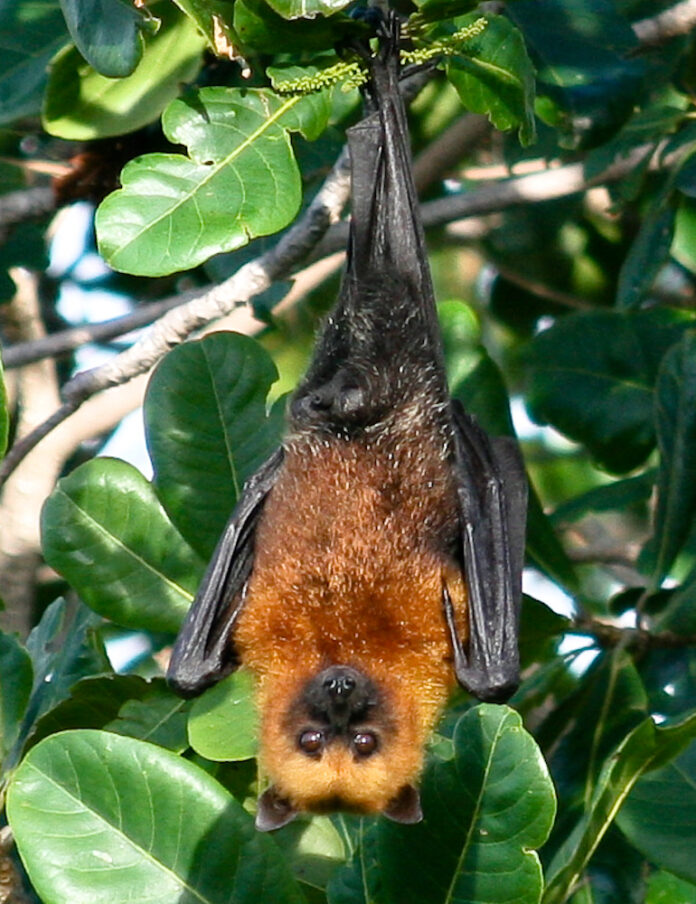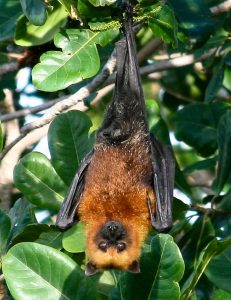
BY HARRY WEEKES

I had the good fortune of traveling to the Seychelles at the end of March. After a journey that crossed 12 time zones, took place over four calendar days, and was equal parts disorienting and miraculous, I was standing on a ferry dock at Praslin Island in the northwestern arm of the Seychellian Archipelago in what are known as “the granitics.” This ancient part of the world is a unique cluster of 65-million-year-old granitic islands poking out of the western Indian Ocean.
It was late afternoon and hot and humid enough to warrant not moving at all. Fortunately, this “sit and wait” technique is a time-tested strategy that has worked for predators for eons. It is also a great field strategy for the nerd, as organisms as diverse as fish, birds, and humans can forget you’re there if you just stay really still. In this case, I was simply working on not bursting into flames as my body adjusted to, or tried to, a shift of about 60 degrees in temperature and an equal percentage increase in humidity.
I was taking things in in the way that I do when I am in a novel place—where there might be organisms with which I am generally familiar, but about whom the specifics are unknown. In the water, I saw fish. And a school of “not fish.” This little school was made of large-eyed, torpedo-shaped, tentacled members. Squid. A school of squid. What kind? I have no idea.
This is also how I go through birds in a foreign place. Bird. Dove. What kind of dove? A cooing one. It takes a bit of digging before I get to zebra dove, or Madagascar turtle dove.
And so it was that I was on a dock, looking skyward, and thought “bird.” Then crow, or possibly raven, due to the size. As I was wondering if either of these lived in the Seychelles, there was something not quite right. Something strange.
The brain is an amazing thing. Observations, descriptions, events, experiences—all are introduced into our world, spend a bit of time getting acquainted with our consciousness, then settle into the vast landscape of our subconscious… and wait.
Wait until you are standing on a dock watching a tailless not-crow flap over a forest, and from somewhere back in time your mother mentions something that connects with field excursions in college and it all comes together—bat.
The Seychelles giant fruit bat is, appropriately, a megabat; weighing in at over 2 pounds, with a wingspan to match, it does indeed look like a crow, with a fox’s face, and a tail disguised in a membrane of skin stretched between its back legs. This is the same type of skin stretched between the bat’s fingers that make up the airfoil of their wings (incidentally, bats are in the order Chiroptera, which roughly translates as “hand wing” because their wings are membranes of skin stretched between elongated fingers).
It turns out, when a fruit bat flies over your head, it is like a living representation of the Gotham City signal to Batman, and somehow utterly appropriate for an introduction into the tropics after such a long trip. Yep, a megabat is flying over my head.
What is unusual, though, is that these strange birds are common enough to be unremarkable, which I mean literally. As in, not one person made any comment about them. Huh. Giant, diurnal, fruit-eating bats larger than my dogs. And one pasty Idahoan standing totally still on a jetty. Welcome to the Indian Ocean.
Harry Weekes is the founder and head of school at The Sage School in Hailey. This is his 47th year in the Wood River Valley, where he lives with his wife Hilary and their three kids—Georgia, Penelope and Simon—a nice little flock.


